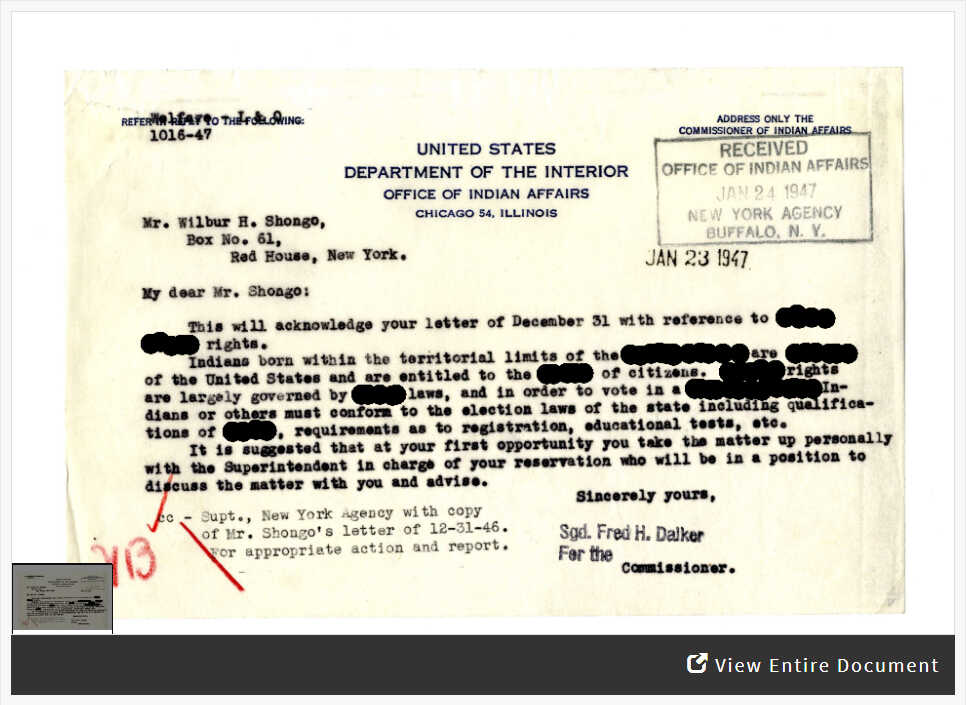In this activity, students will analyze a 1947 response from the Office of Indian Affairs to a letter they received about American Indian voting rights in New York. This will facilitate a class discussion surrounding American Indian voting rights and differing state laws.
Suggested Teaching Instructions
This activity fits into a unit on American Indian history or the expansion of voting rights. Use in a full-class setting. (Or ask students to work individually or in pairs and come back to discuss their findings.) For grades 8-12. Approximate time needed is 30 minutes.
Present the activity to the class and ask students to focus on the details in the letter as part of a document-analysis exercise.
Ask students to use the following steps of
document analysis to understand the letter:
1. Meet the document.
2. Observe its parts.
3. Try to make sense of it.
4. Use it as historical evidence.
Using these guidelines, discuss as a class what words may be blacked out. What clues led students to those conclusions? Are they surprised by the content of the letter? Why or why not?
Click on "View Entire Document" to share the
full contents of the letter with the class.
Ask students: Are there any other details of the letter that surprised you?
Students may be surprised that someone was not sure whether they were allowed to vote in 1947. Students may find this date more recent than expected for questions surrounding American Indians' right to vote.
Explain the varied implementation of American Indian voting rights across different states:
Voting rights are largely governed by states and citizenship status. American Indians were not universally granted citizenship until 1924, and states interpreted voting rights differently. Some states didn't extend suffrage to American Indians until well into the 20th century.
American Indians were able to vote in New York State in 1947. It was not until 1962, however, that the final state, Utah, removed restrictions that prevented American Indians from voting.
The Voting Rights Act of 1965 focused primarily on enfranchising African Americans in the South, but the act and its extensions also safeguarded the voting rights of many other minority Americans. This was further expanded by the Voting Rights Act of 1975 which aimed to protect women and men in language minorities, including American Indians, from discrimination at the polls.





